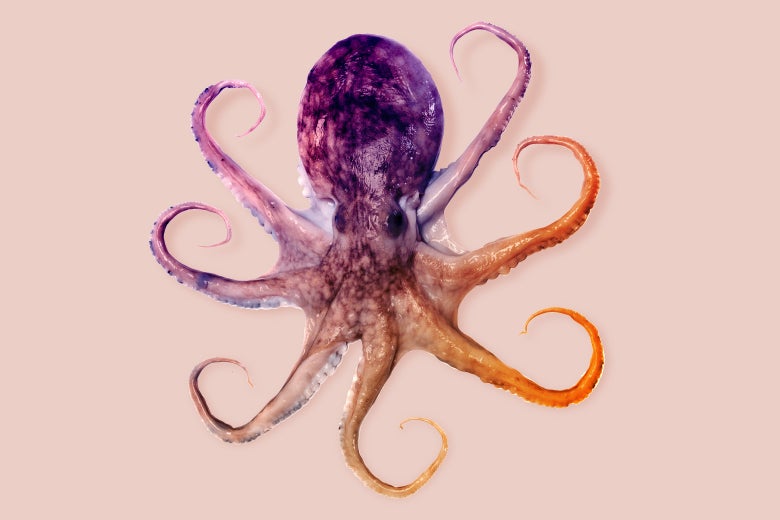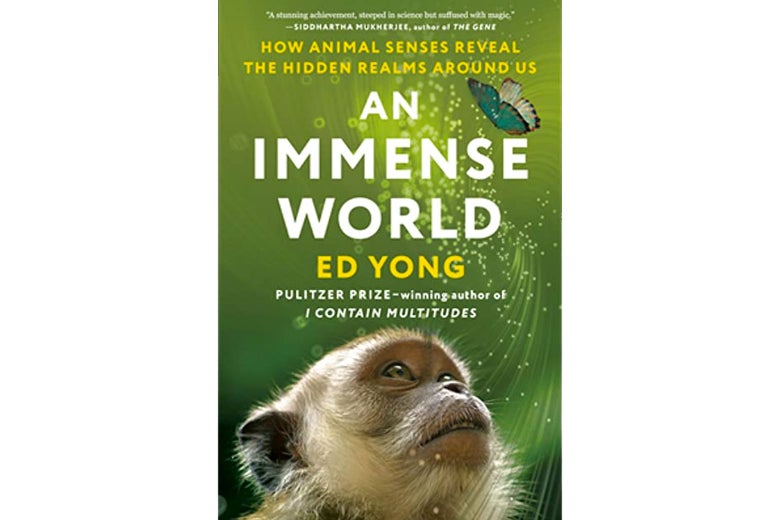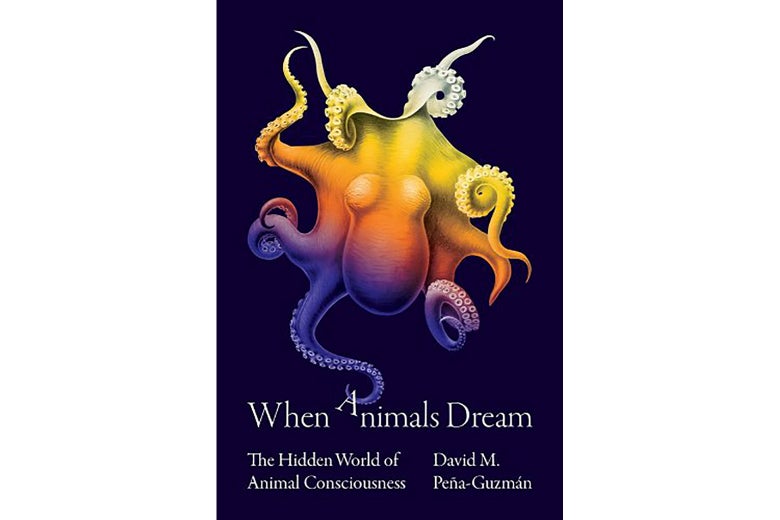John James Audubon was wrong. The great naturalist may have illustrated and compiled 1827’s Birds of America, a pioneering work of ornithology, but thanks to a series of sloppy experiments on turkey vultures, he insisted that birds can’t smell. This was taken for granted until the 1960s when two women scientists in New Zealand proved otherwise, but we are still discovering just how discerning bird’s noses can be. In the 1990s, biologist Gabrielle Nevitt was puzzling, as human beings have for millennia, over the ability of seabirds to locate food and accurately navigate long distances over seemingly blank ocean. When a climate scientist casually mentioned a chemical released into the air when plankton are eaten by krill (tiny animals that make up the diet of many ocean denizens), Nevitt realized that this might be just the clue she was looking for. Soon she learned, as Ed Yong describes it in his new book, An Immense World: How Animal Senses Reveal the Hidden Realms Around Us, that where human beings see a featureless ocean surface, the birds perceive “a seascape of odorous mountains and unscented valleys,” smells that formed “a secret topography invisible to the eye but evident to the nose,” guiding them not just to their next meal but back across the sea to home.
Like a lot of great science writing, An Immense World is a catalog of such wonders. Yong found birds that can see colors invisible to the human eye, seals that can follow the trail of objects by minute disturbances in the water, and crickets with hairs so sensitive they can detect the passage of a single photon. But—pardon the anthropocentricism—what does this mean to the humans reading Yong’s book? The revelation of these superpowers, he implies, should remind us that “animals are not just stand-ins for humans or fodder for brainstorming sessions. They have worth in themselves.” To him, their difference from humans is where that worth resides, although this argument is only half-baked. Why should difference in itself be valuable? Does everything able to do something that human beings can’t—a plant, a river, a cloud, a computer program—enjoy the same status as animals?
Certainly, An Immense World works as a corrective to the presumptions of human beings. Yong travels from bat lab to spider lab to fish lab, where scientists enthuse about the incredible perceptive powers of the species they’ve chosen to study and recount the ingenious experiments they’ve used to measure how animals deploy their senses in ways humans can’t. The history of our observations of our fellow creatures is a series of corrected mistakes and solved mysteries as we’ve gradually realized that animals don’t perceive and experience the world as we do.
Yong concludes the book with a plea to roll back the effects our technologies have imposed on the environment—not just global warming and habitat loss, but also noise and light pollution, which have drastic effects on specific species and whole ecosystems. Compressors used to extract natural gas make a noise that drives away the scrub jays that are primarily responsible for distributing the seeds of the piñon pine trees in New Mexico that in turn provide food and shelter for hundreds of other species, for example. “With every creature that vanishes,” Yong writes, “we lose a way of making sense of the world”—the particular experience formed by their unique array of sensory abilities. “Our sensory bubbles shield us from the knowledge of those losses. But they don’t protect us from the consequences.”
There will always be people, however, who don’t care about such things unless they dramatically affect the welfare of human beings—more specifically, themselves. To someone like that, the bleaching of the coral in the Great Barrier Reef is only a problem if it drives away fish, that then don’t eat the seaweed along the Australian coast, causing it to become choked with the plants, thereby ruining the tourist trade. But what do we owe animals for their own sake?
I thought of this question, which Yong never fully asks or answers, while reading David Peña-Guzmán’s When Animals Dream: The Hidden World of Animal Consciousness. This book makes an excellent companion to An Immense World. Amiable, lucid, and concise, it argues that at least some animals dream in the way that people do—a view most pet owners will second—and that this in itself gives them “moral status” as entities who, like people, cannot be treated as a means to an end. The latter argument is trickier, but even getting to the first one obliges Peña-Guzmán to make some speculative leaps. There is no science that has yet been able to illuminate the content of an animal’s dreams and, with the possible exception of primates that have been taught sign language, they are unable to describe them to us. But Peña-Guzmán addresses his own conjectures with a winning frankness and the fair point that any counterarguments must involve just as much guesswork.
A principle of comparative psychology known as Morgan’s Canon stands opposed to many of Peña-Guzmán’s propositions. A bit like Occam’s razor, it states that scientists ought not to attribute humanlike emotions, thoughts, or states to animals if a simpler explanation is available. Humans tend to see ourselves everywhere, committing the intellectual and scientific error of anthropomorphism unless we make a point of avoiding it. This is a recurring theme in Yong’s book, that we have historically blinded ourselves to what animals are doing and how they’re doing it because we’ve assumed that they use the same sense organs in the same ways that we do. We notice lions stretched out on the ground and we see the savannah’s equivalent of couch potatoes, not recognizing that their bellies are rich with nerves that detect the vibrations caused by the hooves of potential prey.
Yong and Peña-Guzmán often seem to be making the same argument for opposite reasons. As Yong frames it, we should appreciate animals more because they are so unlike us. “This is a book not about superiority,” he writes, “but about diversity,” and that’s the closest he comes to applying a moral standard about human society (diversity is inherently good) to the animal kingdom. An Immense World is a book about science, in which human values (putting a premium on sight, for example, over smell or hearing) cloud our ability to see the facts. When Animals Dream, on the other hand, advocates for greater consideration of animals because they are so much more like human beings than previously supposed. It is a book about values that sometimes breezes past the science.
That’s because When Animals Dream is essentially a work of moral philosophy. Once Peña-Guzmán reviews enough evidence to indicate that some animals do dream and that such dreams are quite likely to be “imaginative”—that is, not just replaying the experiences of the creature’s waking life, but also combining elements to create new images—he insists that this is sufficient to demonstrate that such animals are “conscious.” Here, Peña-Guzmán gets into a dispute with thinkers who believe that consciousness exists only where rational thought and/or language is present. Peña-Guzmán counters that rationality is only one form of consciousness and not the foundational form, the form that entitles beings to be considered as “members of the moral community, as fellow creatures who deserve to be treated with care, dignity, and respect.”
What really matters, what qualifies a creature to be valued in this way, is not its cognitive abilities but what Peña-Guzmán calls “phenomenal consciousness”: an awareness of existing in the world and the experience of desire and suffering. Rocks and plants don’t have it, but elephants certainly do. Yong, in his chapter on pain, notes that people are forever asking biologists who study crustaceans whether lobsters and crabs feel pain, which is a question “less about the animals themselves and more about what we can do to them.” The biologists still don’t have a solid answer for that question, but as far as Yong is concerned, asking it just gets in the way by limiting “our understanding of what animals actually sense.”
For Peña-Guzmán, however, what we can do to animals is the essential point. His book, as should now be obvious, lays the philosophical groundwork for animal rights. Dreaming, because it is detached from action or reason, is pure phenomenal consciousness. A dream always has the point of view of a self, one that has, as Peña-Guzmán writes, a “subjective, embodied, and affective—in one word, phenomenal—anchoring in the world,” even if that world is imaginary. (Of course, we don’t know what animal’s dreams are like and probably never will, but this is one of those leaps that Peña-Guzmán considers justifiable.)
Strangely, while Peña-Guzmán assembles an assortment of studies suggesting the extent of animal dreaming, When Animals Dream pays no attention to why animals do it. This omission would surely perplex Yong, who points out over and over again how evolutionary pressures lie behind the often astounding sensory feats of animals—whether it be ducks, which can filter minute nutrients from mud with their sensitive beaks, or species of frogs in which the males evolved the ability to make a sound that the females find particularly alluring.
If animals do dream, and it seems certain that some of them do, they may or may not do it for the same reasons we do, reasons that are not intentional but simply ingrained in our nature and apparently necessary for our survival. Peña-Guzmán never addresses this important mystery. But then scientists still haven’t solved it for humans, exactly. It is widely thought that dreams have something to do with the formation of memories, but the jury’s still out. Probably insects don’t dream, but it’s possible octopi do, as an anecdote Peña-Guzmán relates in his introduction suggests. The octopus’s owner observed her as she slept, changing colors in a sequence that mimicked her color changes while hunting and eating a crab.
The octopus, however, has surely never spent a moment wondering whether the crab could dream or, for that matter, feel pain. When Animals Dream is really a book about human beings, and what we ought to do with our growing knowledge of the creatures that share our planet. An Immense World is a book that struggles to describe animals as they are, and as they experience their existence, by tearing away the scrim of human projections and concerns. What both books share is a reverence for the inner lives of these creatures, the fact that they carry within them an entire world that we can’t truly access. None of our technology can show us the colors that only certain birds can see, because our eyes are simply not able to see them. Each of these authors wants to strike a blow against human exceptionalism, but this still belongs to us alone. Surely we are the only animals capable of yearning to see those colors, and ravished by the knowledge that we never will.
An Immense World: How Animal Senses Reveal the Hidden Realms Around Us
By Ed Yong. Random House.
When Animals Dream: The Hidden World of Animal Consciousness
By David M. Peña-Guzmán. Princeton University Press.
Slate receives a commission when you purchase items using the links on this page. Thank you for your support.


